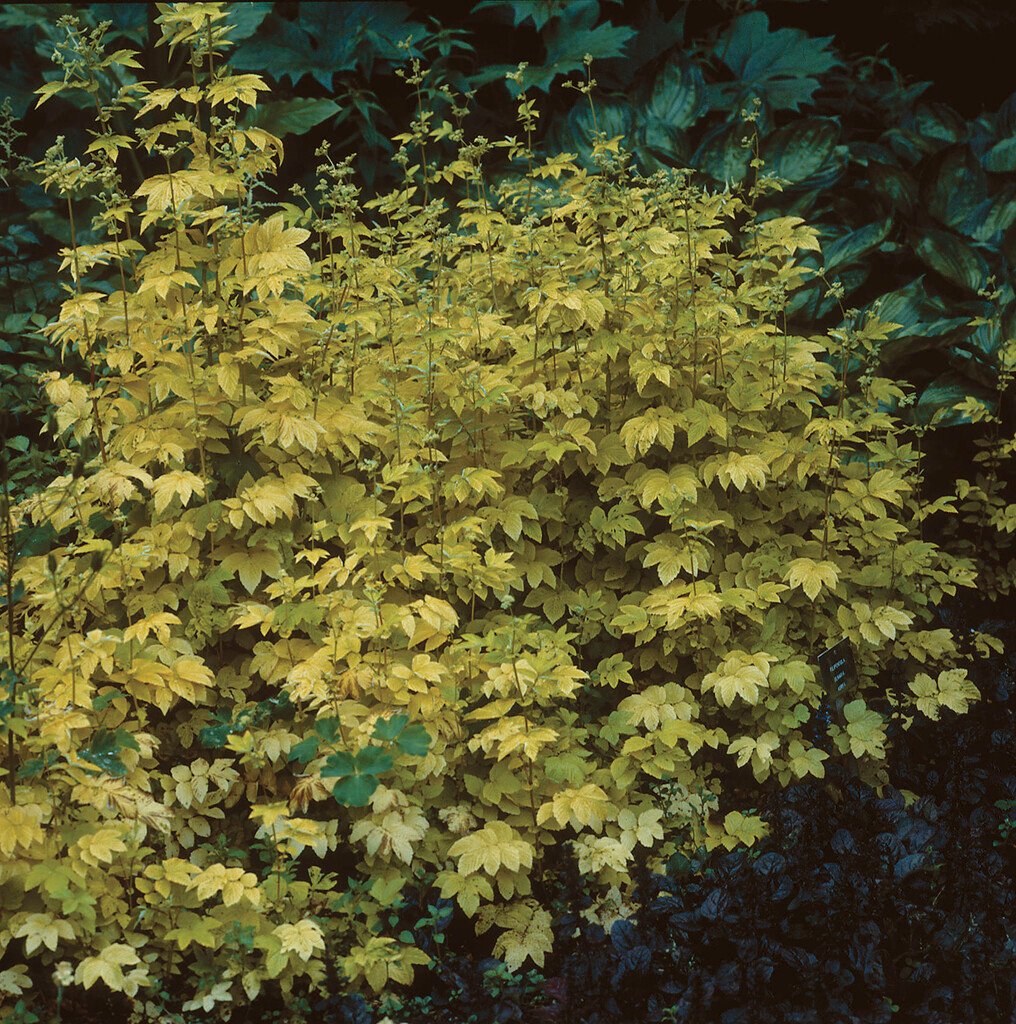Filipendula ulmaria 'Aurea'
A clump-forming, decidous perennial to 1m in height, with pinnate leaves that start out a warm yellow in spring, maturing to creamy yellow in late spring and pale green as the season progresses. Although often grown more for the foliage, it bears fragrant cream flowers in summer
Size
Ultimate height
0.5–1 metresTime to ultimate height
2–5 yearsUltimate spread
0.5–1 metresGrowing conditions
Moisture
Poorly–drained, Moist but well–drainedpH
Acid, Alkaline, NeutralColour & scent
| Stem | Flower | Foliage | Fruit | |
| Spring | Yellow | |||
|---|---|---|---|---|
| Summer | White Cream | Green | ||
| Autumn | Green | |||
| Winter |
Position
- Full sun
- Partial shade
Aspect
North–facing or East–facing or South–facing or West–facing
Exposure
Exposed or Sheltered Hardiness
H6Botanical details
- Family
- Rosaceae
- Native to GB / Ireland
- No
- Foliage
- Deciduous
- Habit
- Bushy
- Genus
Filipendula are rhizomatous herbaceous perennials with pinnately divided leaves and large sprays of small rosy-pink or white flowers borne on leafy stems well above the foliage
- Name status
Accepted
How to grow
Cultivation
Grow in full sun in moisture-retentive soil or in part shade to prevent scorch
Propagation
Propagate by division. Will seed freely but may not come true to type
Suggested planting locations and garden types
- Cottage and informal garden
- Wildflower meadow
- Wildlife gardens
- Flower borders and beds
Pruning
It's recommended to cut away the flowers as they form, to maximise the foliage effect. Cut back old growth at the end of the growing season
Pests
Generally pest-free
Diseases
May be susceptible to powdery mildews in dry soil or fungal leaf spot
Love gardening
Sign up to receive regular gardening tips, inspiration, offers and more
View our Privacy Policy
Get involved
The Royal Horticultural Society is the UK’s leading gardening charity. We aim to enrich everyone’s life through plants, and make the UK a greener and more beautiful place.
